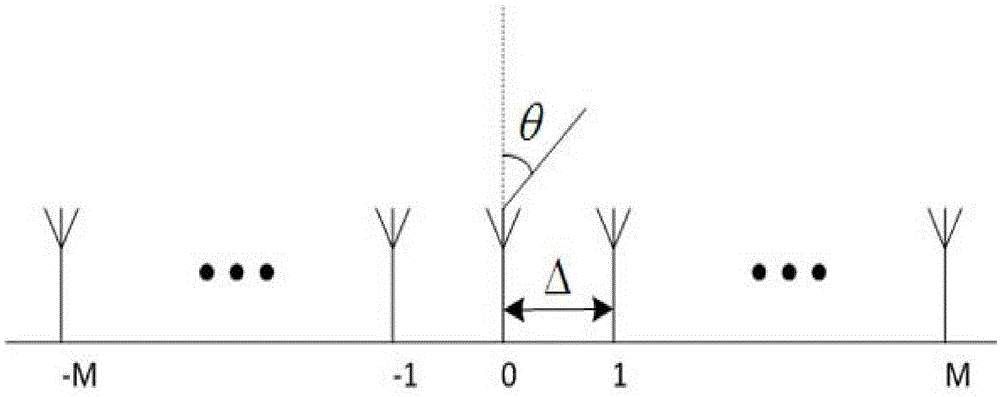Coherent signal wave direction-of-arrival estimation method and system without signal source number estimation
A direction of arrival estimation and coherent signal technology, which is applied in computing, electrical digital data processing, special data processing applications, etc., and can solve problems such as difficulty in effectively estimating the number of signal sources.
- Summary
- Abstract
- Description
- Claims
- Application Information
AI Technical Summary
Problems solved by technology
Method used
Image
Examples
Embodiment Construction
[0072] The invention discloses a method for estimating the direction of arrival of a coherent signal without estimating the number of sources, comprising the following steps:
[0073] Consider a uniform linear array (ULA) with (2M+1) elements. Suppose there are P(P≤M+1) far-field narrowband signals from different directions {θ 1 ,…,θ P} incident on the array, the first K signals are mutually coherent, and the remaining (P-K) signals are mutually uncorrelated and independent of the first K signals. Let the first signal d 1 (t) as a reference signal, then the kth coherent signal can be expressed as
[0074] d k ( t ) = ρ k e j δφ k d 1 ( t ) , k ...
PUM
 Login to View More
Login to View More Abstract
Description
Claims
Application Information
 Login to View More
Login to View More - R&D
- Intellectual Property
- Life Sciences
- Materials
- Tech Scout
- Unparalleled Data Quality
- Higher Quality Content
- 60% Fewer Hallucinations
Browse by: Latest US Patents, China's latest patents, Technical Efficacy Thesaurus, Application Domain, Technology Topic, Popular Technical Reports.
© 2025 PatSnap. All rights reserved.Legal|Privacy policy|Modern Slavery Act Transparency Statement|Sitemap|About US| Contact US: help@patsnap.com



